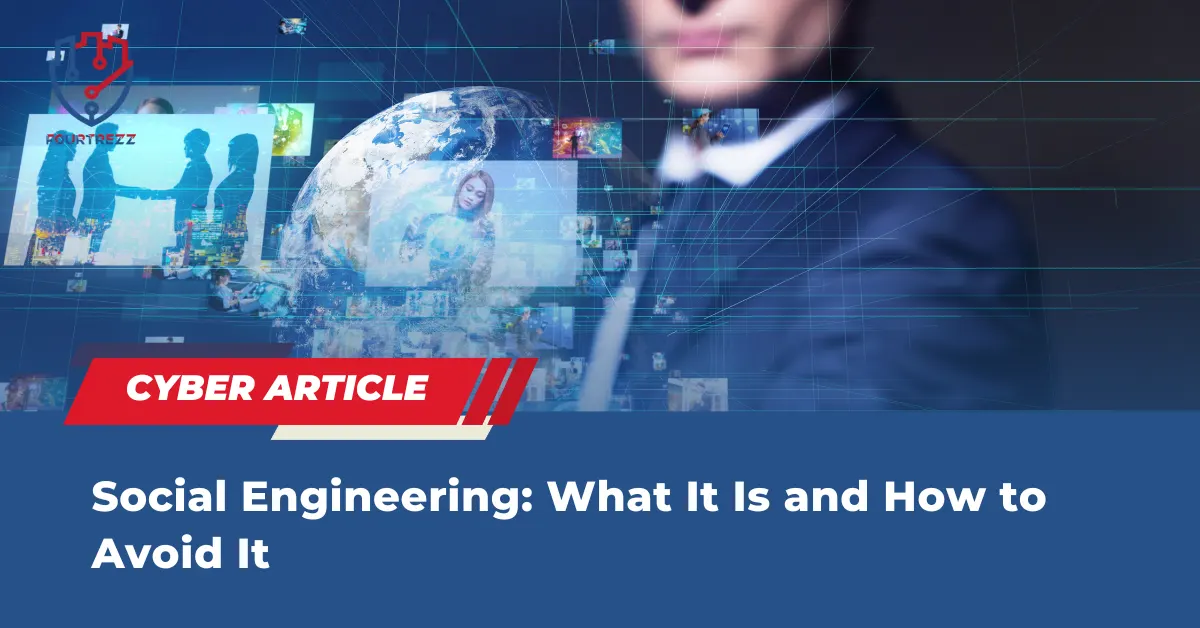Social engineering is a psychological manipulation technique used by cybercriminals to steal information or gain access to systems or networks. This technique relies on social interaction and exploits human weaknesses, such as the tendency to trust others or feel rushed to complete a task. Social engineering can also be conducted through email, phone, or social media.
Social engineering is becoming an increasingly serious threat in the digital era. Everyone who uses technology for work or communication should be aware of the risks associated with social engineering. Although security systems can be designed to prevent external attacks, human vulnerabilities can be exploited by cybercriminals to launch attacks.
This article aims to provide a better understanding of social engineering, recognize the techniques often used by cybercriminals, and offer ways to avoid or overcome social engineering attacks. I hope this article helps you understand the threats associated with social engineering and enhances awareness of the importance of information security.

Understanding Social Engineering
- Definition of Social Engineering
Social engineering is a tactic or technique of social manipulation used by cybercriminals to manipulate victims and gain access to systems or confidential information. This technique is based on the principle that humans are always vulnerable to social manipulation, often willingly granting access to confidential information or security systems.
- History of Social Engineering
Social engineering has existed for centuries and has been used by many to achieve their goals. However, in the context of information security, social engineering became known in the 1800s when scammers sent fake letters to their victims requesting personal or financial information. With the advancement of technology and social media, social engineering has evolved and become a serious threat to information security.
- Examples of Social Engineering
Common examples of social engineering include phishing, pretexting, baiting, and quid pro quo. Phishing is a social engineering technique where cybercriminals attempt to obtain confidential information by forging emails or websites that appear legitimate. Pretexting involves cybercriminals using false pretexts or plausible reasons to request confidential information from victims. Baiting involves placing fake bait or rewards to lure victims into providing personal information or entering a system. Quid pro quo involves offering an exchange of services or rewards in exchange for information or system access.
This article will discuss social engineering techniques in detail and how to avoid or overcome them. By understanding the techniques often used by cybercriminals, we can be more vigilant and protect ourselves and our information from social engineering attacks.
Types of Social Engineering
- Phishing
Phishing is a type of social engineering where cybercriminals attempt to obtain confidential information such as usernames, passwords, or financial information by forging emails or websites that appear legitimate. Victims are usually asked to enter personal information on a fake website or through a fraudulent email.
- Pretexting
Pretexting is a type of social engineering where cybercriminals use false pretexts or plausible reasons to request confidential information from victims. Cybercriminals typically use phone calls or emails to contact victims, giving false reasons like claiming to be a bank or government agency.
- Baiting
Baiting is a type of social engineering where cybercriminals place fake bait or rewards to lure victims into providing personal information or entering a system. The bait can be free gifts, discounts, or free file downloads.
- Quid Pro Quo
Quid pro quo is a type of social engineering where cybercriminals offer an exchange of services or rewards in exchange for information or system access. Cybercriminals may offer prizes, such as gift cards, cash rewards, or other incentives, in exchange for confidential information.
- Tailgating
Tailgating is a type of social engineering where cybercriminals exploit victims’ trust to enter an area or building. Cybercriminals may try to follow someone entering a building, claiming they forgot or don’t have an access card, and ask for help from a legitimate person to gain entry.
Social Engineering Techniques Often Used
- Emotional Manipulation
Emotional manipulation is a common technique used in social engineering attacks. Cybercriminals attempt to exploit victims’ emotions, such as fear, desire to help, or curiosity, to obtain personal information or access to systems.
- Common Interest Technique
The common interest technique is a social engineering technique where cybercriminals try to build a relationship that makes victims feel they share common interests with them. Cybercriminals take advantage of this relationship to request confidential information or access to systems.
- Authority Technique
The authority technique is a social engineering technique where cybercriminals use positions or power to coerce victims into providing confidential information or system access. An example is when cybercriminals pose as supervisors or authorities and request personal information or system access.
Avoiding Social Engineering
- Education and Training
Education and training on social engineering are key to strengthening information security awareness in an organization. All team members, especially those responsible for personal information and information security, need to be trained and given an understanding of social engineering techniques and how to avoid them.
- Being Wary of Unknown Information
Being wary of unknown information is also important to avoid social engineering attacks. Avoid giving out personal information, login credentials, or passwords to unknown individuals or companies. Make sure to verify such information through trusted official sources.
- Implementing Security Policies
Implementing strict security policies is one way to avoid social engineering attacks. Security policies can include restrictions on access to information and systems, procedures for reporting security incidents, the use of security tools like firewalls and antivirus, and more.
- Updating and Securing IT Systems
Updating and securing IT systems is also crucial to avoid social engineering attacks. Ensure that IT systems and software in the company are always updated and protected with firewalls, antivirus, and other security protections.
- Paying Attention to Details
Paying attention to details is also very important to avoid social engineering attacks. Carefully check every email or text message received and ensure the sender’s email address or phone number is legitimate. Carefully examine each link or attachment before clicking or opening it.
Conclusion
The threat to information security is increasingly complex and rapidly evolving. One technique often used by attackers is social engineering, which exploits psychological manipulation to access confidential information or hack IT systems. Therefore, it’s crucial for us to understand what social engineering is and how to avoid it.
This article has explained the concept of social engineering, types of social engineering, techniques often used, and ways to avoid social engineering. To strengthen defense against social engineering, education and training, strict security policies, and attention to detail are required.
It’s important for us to be cautious of unknown information, secure IT systems, and regularly update software. By doing so, we can minimize the risk of social engineering attacks and keep our information secure.
In conclusion, I want to re-emphasize the importance of being vigilant against social engineering and the collective effort we need to prevent it. Everyone plays a crucial role in maintaining information security, so let’s work together to reduce the risk of social engineering attacks.
Finally, I encourage readers to raise their awareness of social engineering threats and contribute to preventing such attacks. We must continue to learn and adapt to changes in technology and attackers’ tactics, so we can keep our information and systems safe.










